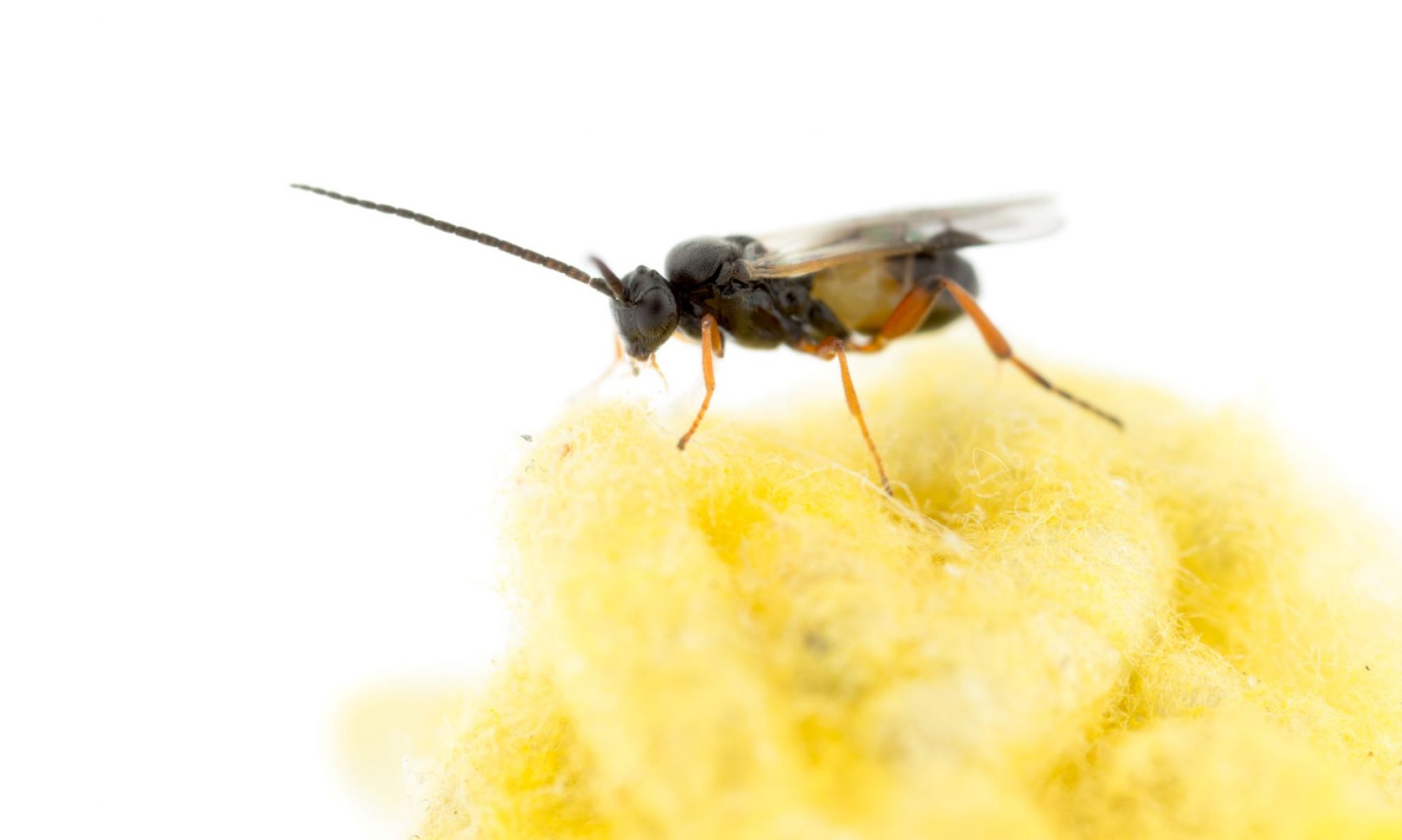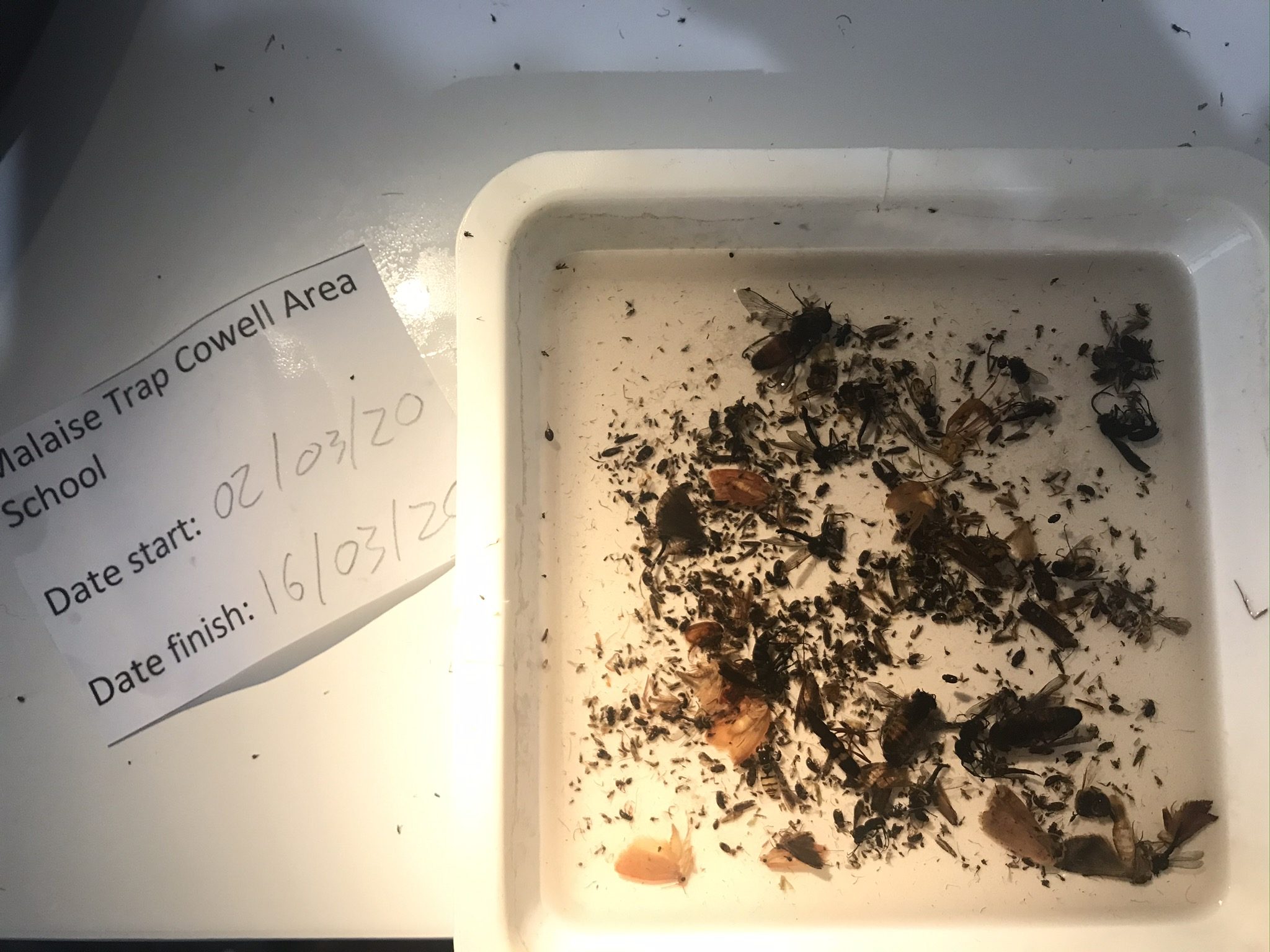Hello wonderful students at Cowell! I hope you are all well and had a good break over the school holidays. I received your trap samples in the post, and have started sorting through them – here is what happened to your samples!
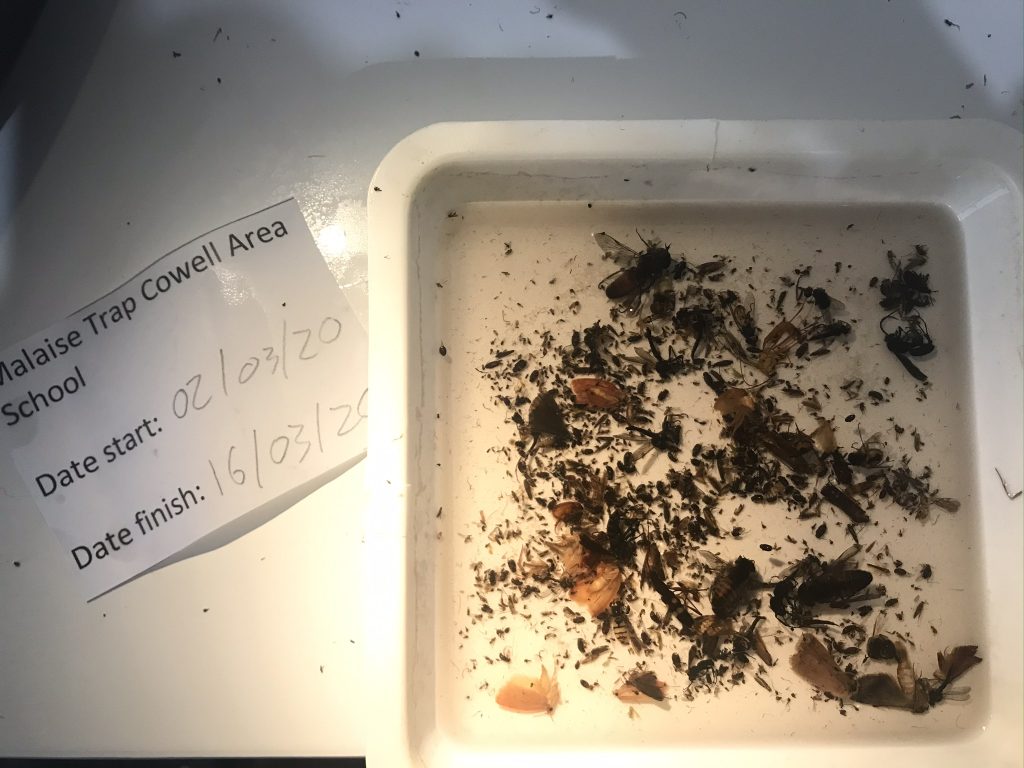
The first step is to get the sample out of the zip lock bag, and into a white dish, which makes it easier to see the specimens.
The next step is to sort the samples to Order level. Order is the level of classification that puts all the beetles together, all the moths/butterflies together etc. Classification is how we organise and understand the living world – we sort it into different levels:
- Kingdom
- Phylum
- Class
- Order
- Family
- Genus
- Species
For example, you and I are in the Kingdom Animalia, (which means we’re an animal) the Phylum Chordata, the Class Mammalia, (which means we’re a mammal) the Family Hominidae, and our Genus + species name is Homo sapiens.
Insects are also in the Kingdom Animalia, but the Phylum Arthropoda (meaning they have an exoskeleton), the Class Insecta (the insects!).
There are around 30 different orders of insects. The ones that were in this trap sample were:
- Coleoptera: The beetles
- Hemiptera: The true bugs (sucking mouthpart)
- Lepidoptera: The moths and butterflies
- Hymenoptera: The wasps, bees and ants (I sorted these three groups separately)
- Diptera: The flies
Once I pick out the larger specimens by eye, I then work under the microscope to sort all the really tiny things – which takes a very long time! Because of the coronovirus, I’m working from home at the moment – but thankfully could borrow a microscope from the University.
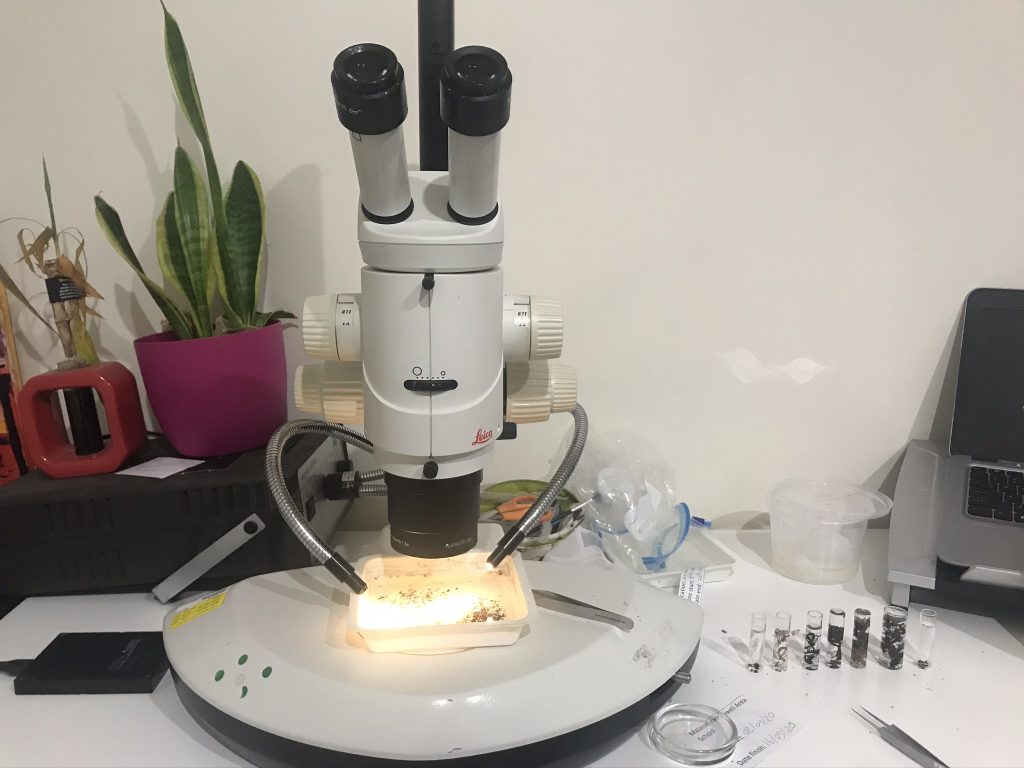
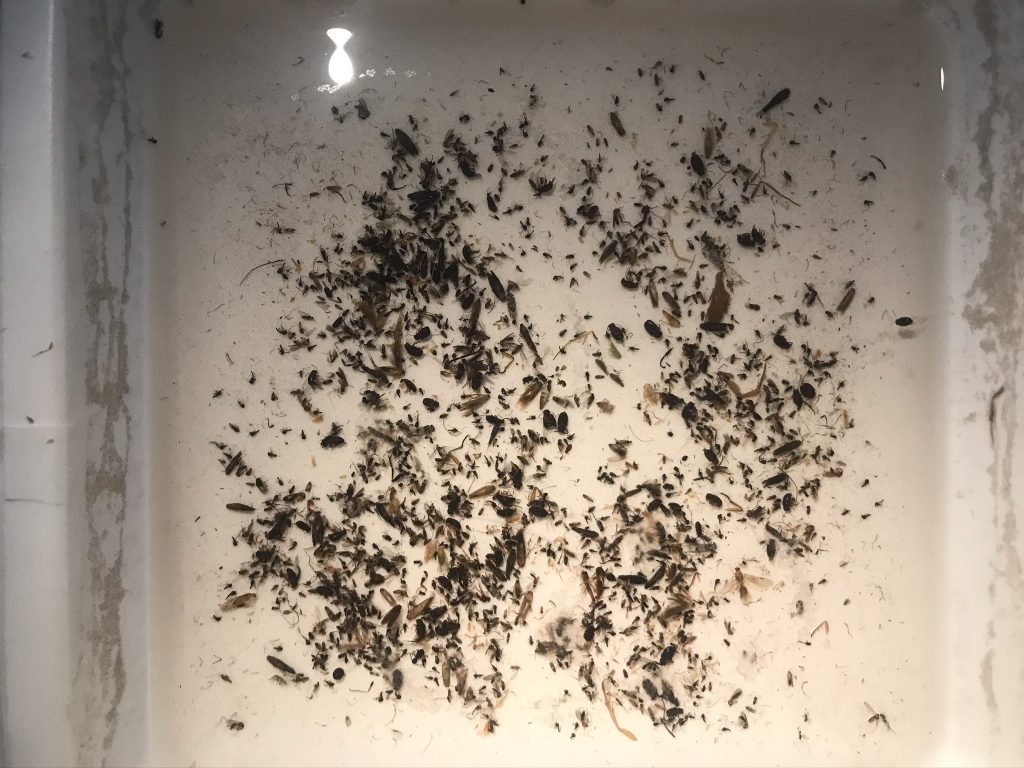
There were lots of really cool insects in this first sample – I’ll show you some pictures of them!
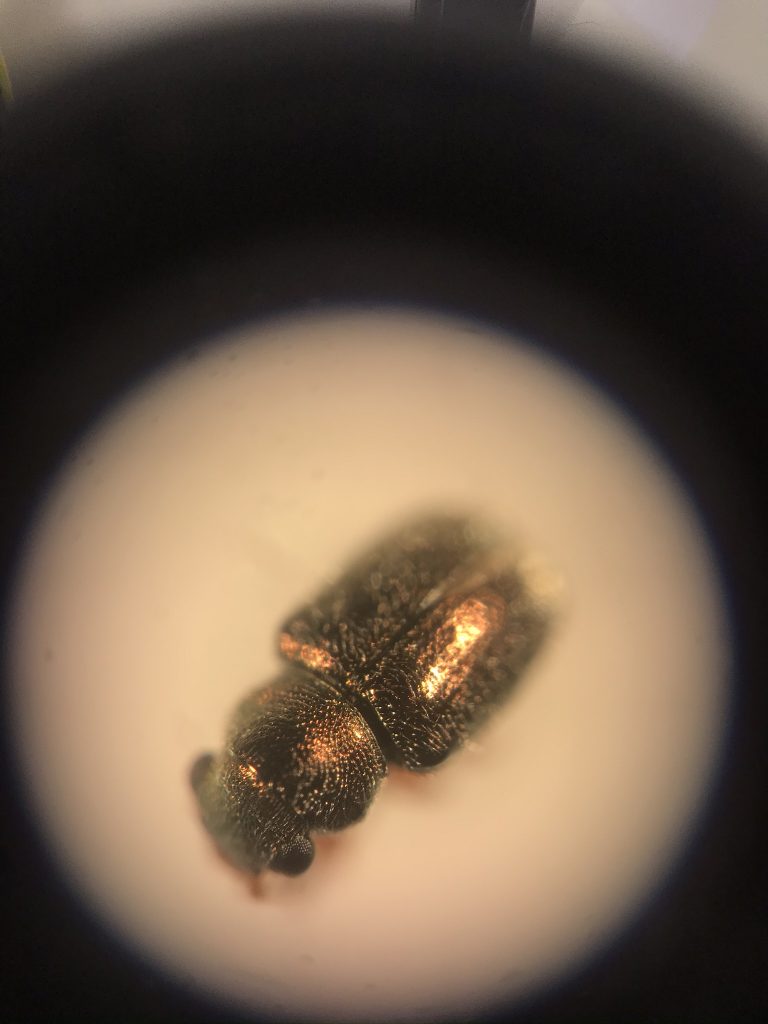
There was a tiny, shiny metallic beetle that was very common in your trap – which means it is very common in the environment around your school. It will be interesting to see if they are in future traps, or whether they just happened to all be emerging/flying around during this fortnight?
I asked Ainsley (who is a Coleopterist, someone who studies beetles) who works at the Entomology department in Orange, NSW, to help us identify the beetle – it is a Chrysomelidae, perhaps something related to this one:

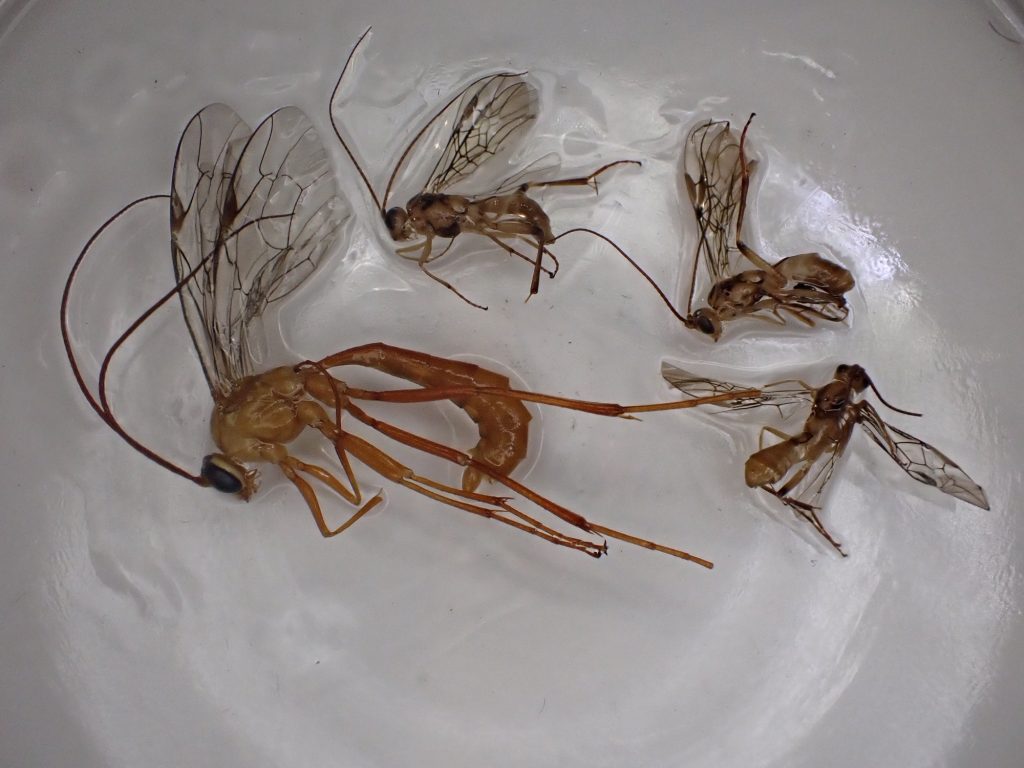
These wasps are from the superfamily Ichenumonoidea – the large one is from the family Ichneumonidae, called the ‘Darwin Wasps’, because Charles Darwin (who first published about the theory of natural selection) wrote about them: “I cannot persuade myself that a beneficent and omnipotent God would have designedly created parasitic wasps with the express intention of their feeding within the living bodies of Caterpillars.” They are caterpillar parsitoids, and lay their eggs inside or on the outside of caterpillars, so that the baby wasp larvae can eat them whilst still alive!
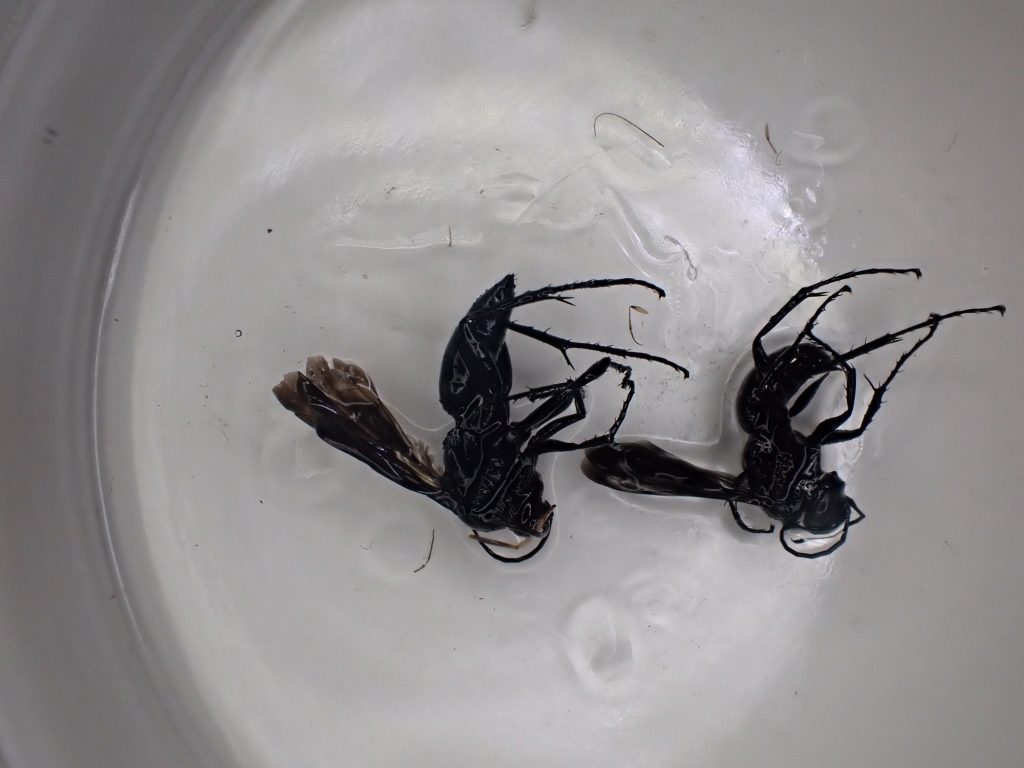
The wasps above are spider wasps in the family Pompilidae – The female wasps dig burrows in the ground. They then find a spider, paralyse it by stinging it, then drag it into the burrow where they lay an egg… the baby wasp hatches out the egg and eats the fresh spider meat provided by it’s mum!

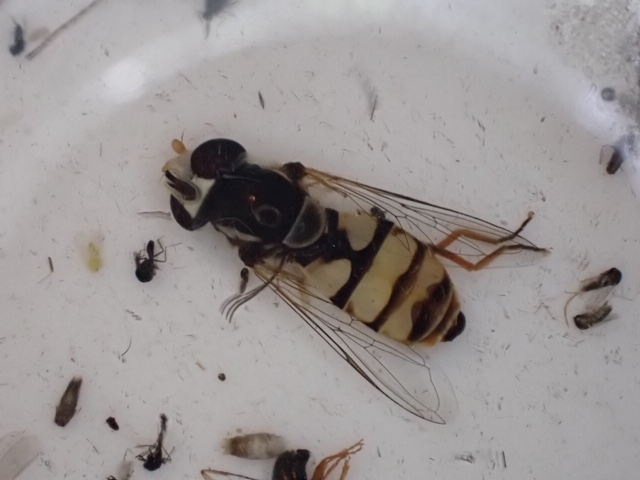
This insect is a hoverfly – whilst it might look like a wasp because of the stripy yellow and black abdomen, it only has one pair of wings (all flies have one pair of wings, whilst wasps have two), and the large eyes and short antennae give it away as a fly! Hoverflies are important pollinators of lots of plants.

There were unfortunately none of the group of wasps I work on in this trap (hopefully in the second sample you sent me in the parcel, which I will sort soon!) but there was a wasp that my friend Ben Parslow, who is the Collection Manager of Insects at The South Australian Museum, works on – a gasteruptid wasp! These wasps lay their eggs inside native bees nests, and the baby wasp eats the food provided for the bee larva, and sometimes even the baby bee! I will pass the specimen on to Ben and see if he can tell us more about it!

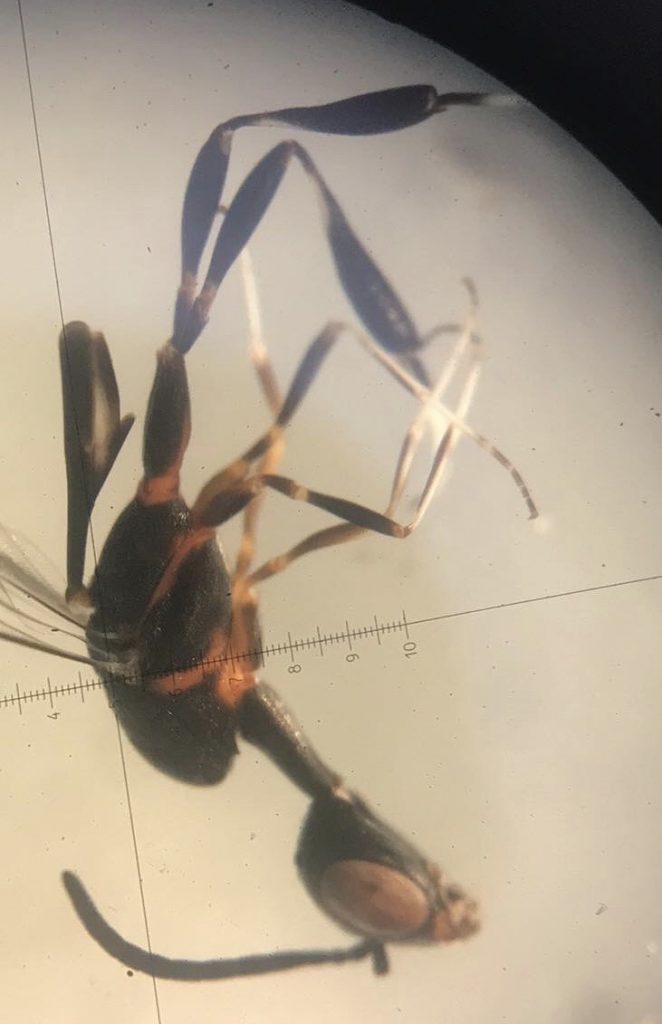
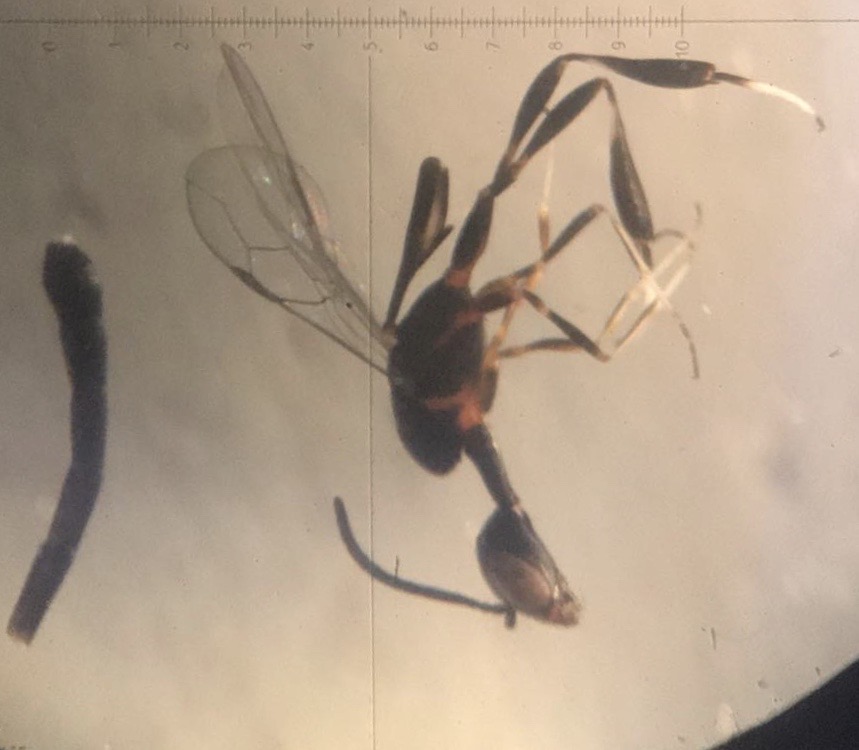
UPDATE: Ben has identified your specimen as a species called Gasteruption longipes, and it is a male (we can tell as it doesn’t have an ovipositor, the egg-laying tube that females have that looks a bit like a stinger).
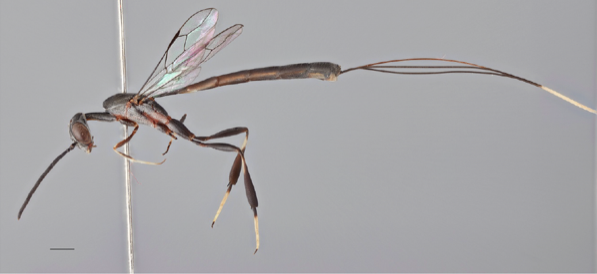
Thanks so much for running the trap for me at your school – I will sort the next sample soon, and look forward to seeing some more samples this term!
